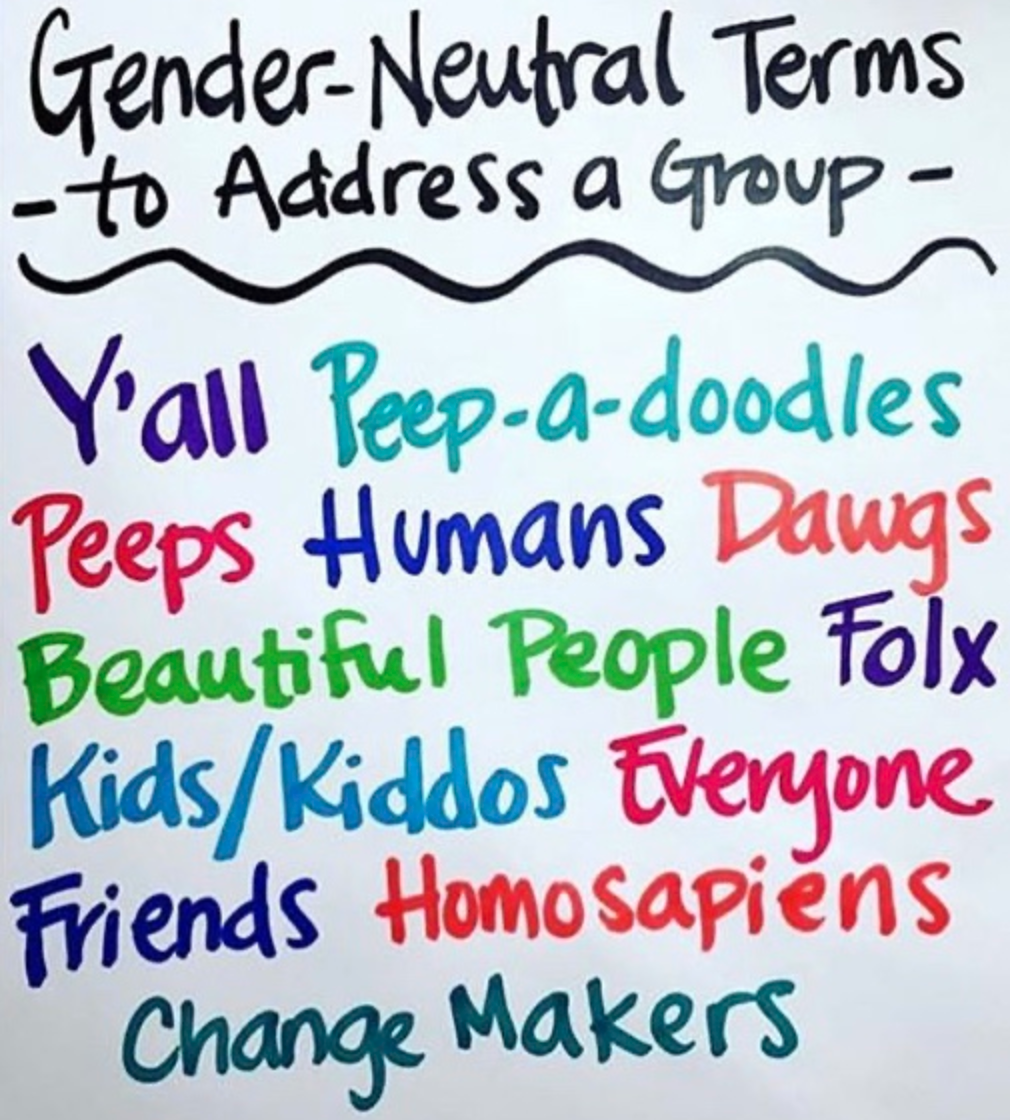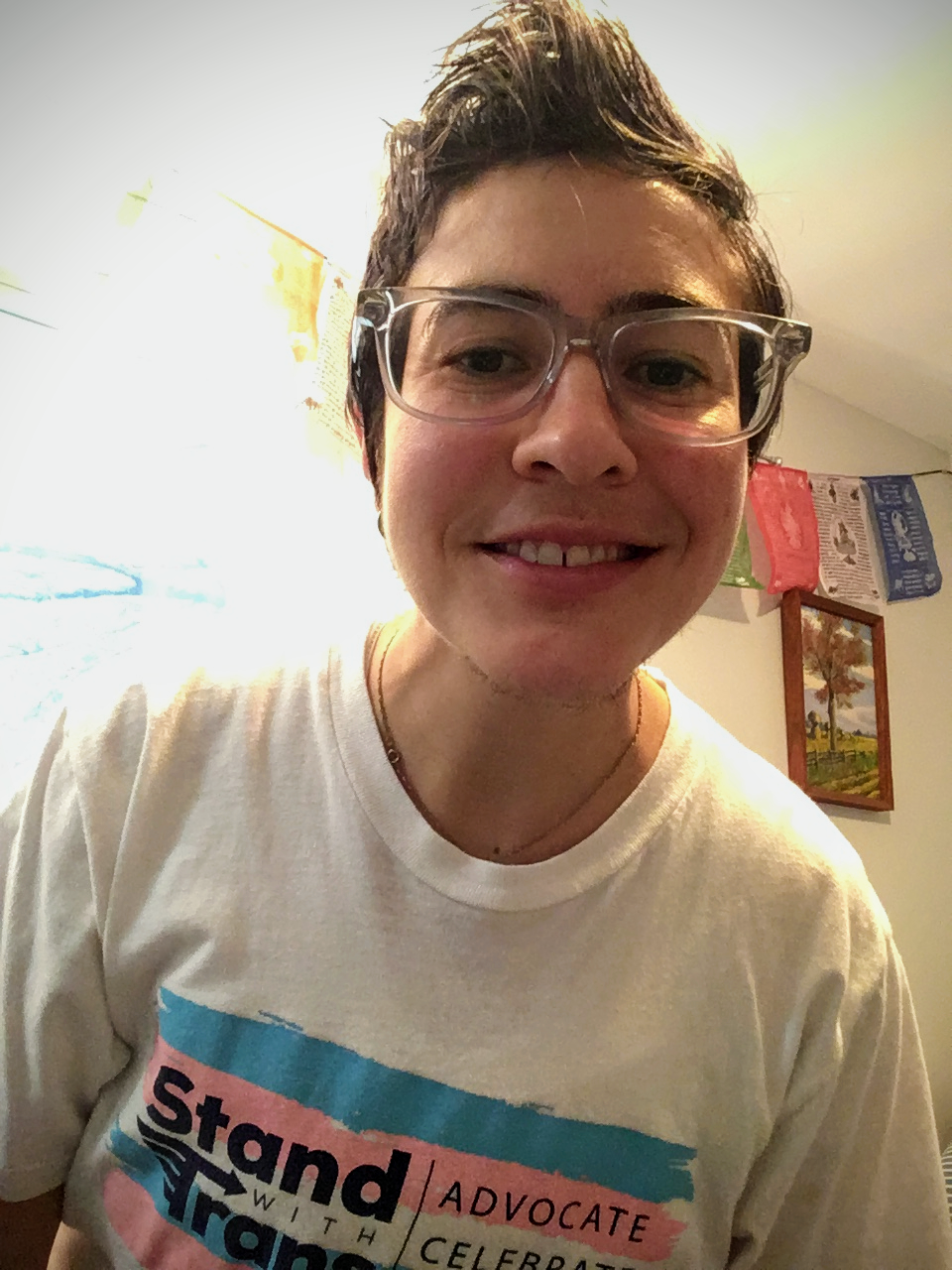Hi, my name is Lu Evergreen and I use they/them pronouns.
This is an introduction that I use in countless zoom meetings throughout the week. Whether those in the meeting are cisgender or transgender, it is important to introduce yourself with your pronouns and use other people’s pronouns correctly. Even though using pronouns is becoming much more normalized, many people do not understand why this is important.
First of all, acknowledging someone’s pronouns shows that you see them as they see themselves. This validates their identity and helps them feel respected, understood and welcomed. Furthermore, by introducing yourself with your pronouns, others will know how to properly and respectfully address you rather than assuming how you identify.
I use they/them pronouns and I identify as a transmasculine nonbinary person. I do not identify within the binary description of male or female. When someone uses my pronouns correctly for the first time or corrects others who have referred to me with the wrong pronouns, I experience gender euphoria. This feeling of joy, comfort and safety arises when my identity is validated by the simple use of the singular “they.” Not too long ago, a family member misgendered me by using “she” pronouns and my 10 year old nephew corrected them; in that moment my heart was filled with happiness. My identity was validated. I knew he would be an ally for me for years to come.
In 2020, The Trevor Project conducted the largest national survey on LGBTQ Youth Mental Health, representing the experiences of more than 40,000 LGBTQ youth ages 13-24. The survey found that transgender and nonbinary youth who reported having their pronouns respected by all or most people in their lives attempted suicide at half the rate of those who did not have their pronouns respected.
Using people’s pronouns correctly saves lives.
In a world where gendered language — ma’am, sir, guys, etc. — is used regularly, it can be very disheartening for a transgender person. Recently while at the grocery store, a clerk referred to my cisgender friend and me as “ladies.” My joyful demeanor quickly vanished; I felt like I had been punched in the stomach. My gender dysphoria ramped up and I was confused since I was using a chest binder, wearing masculine clothes and had a face mask on. I didn’t correct him because I didn’t want the attention. These invalidating situations occur for transgender people regularly and can decrease their self-confidence significantly.
Correct pronoun use and allyship go hand-in-hand. Here are a few tips that when put into practice communicate that you are supportive and an ally.
- Edit your name in zoom meetings and add your pronouns to show solidarity with the trans community and to help normalize pronoun use.
- If you accidentally misgender someone, rather than apologizing profusely and putting unwanted attention on them, just repeat your sentence using the correct pronouns this time. This will help the person feel more validated because they know that you care and are trying to get it right. Repeating yourself also helps to strengthen the neural pathways in your brain so you’re more likely to get it right in the future.
- Don’t assume what someone’s pronouns are based on their gender presentation. Just because someone has a feminine haircut and higher pitched voice doesn’t mean they use she/her pronouns for instance. Having the courage to ask someone about their pronouns rather than risking misgendering them shows that you care about getting it right and are indeed an ally.
I am the Program Manager for Stand with Trans. We receive an overwhelming number of requests to provide Trans 101 training sessions. To me, this demonstrates progress. Companies and organizations want to learn how they can be better allies to their transgender employees through policies and day-to-day interactions. This allows transgender employees to feel more comfortable, safe and accepted in the workplace which will, in turn, result in greater productivity and happier staff.
For resources on how you can be a better ally, information on support services or events for transgender/nonbinary youth and their families or to request a training, please visit us at standwithtrans.org.


Comments
Sign in or become a Nu?Detroit member to join the conversation.
Just enter your email below to get a log in link.